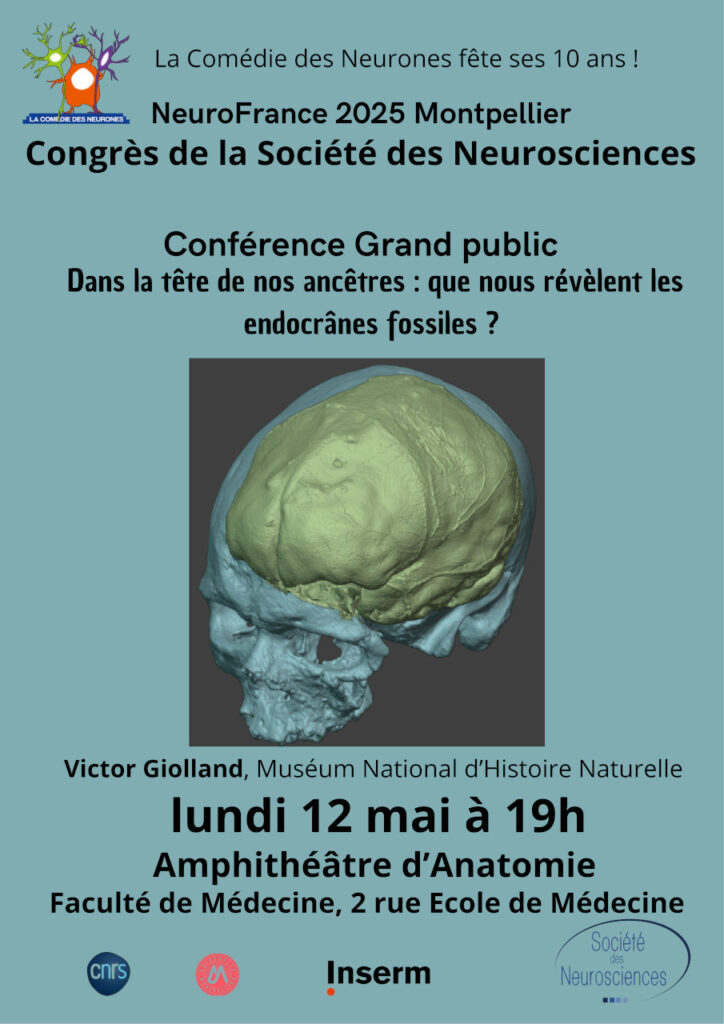Inside the heads of our ancestors: what do fossil endocraniums tell us?
This event is over!
Conference organized by the Comédie des Neurones.
By Victor Giolland (Muséum National d'Histoire Naturelle, Paris).
The brain cannot be fossilized, but by molding the inside of the skull - the endocranium - scientists can study its volume, shape and even the size of its various lobes. It's a study object traditionally used to infer behavior in many extinct species, from mammals to dinosaurs, but it has certain limitations. What can we really observe on an endocranium? How far can we interpret the relationship between form and function? What does this tell us about the behavior of our ancestors? As part of the ANR PaleoBRAIN project, we are attempting to answer all these questions. Thanks to advances in 3D imaging techniques, we have been able to establish correspondences between the endocranium and the brain of modern humans. This original approach opens up new perspectives for interpreting neurological information on fossil material. The imprint of cerebral sulci, the complexity of the diploid network and laterality are all clues that bring us closer to a better understanding of the cognition of extinct hominins. This conference will review the latest advances in this field, at the crossroads of paleoanthropology and neuroscience.

Receive a weekly summary of the UM agenda
* By entering your e-mail address you agree to receive the weekly UM agenda summary by e-mail and you acknowledge our privacy policy. You can unsubscribe at any time using the unsubscribe link or by contacting us by e-mail.
